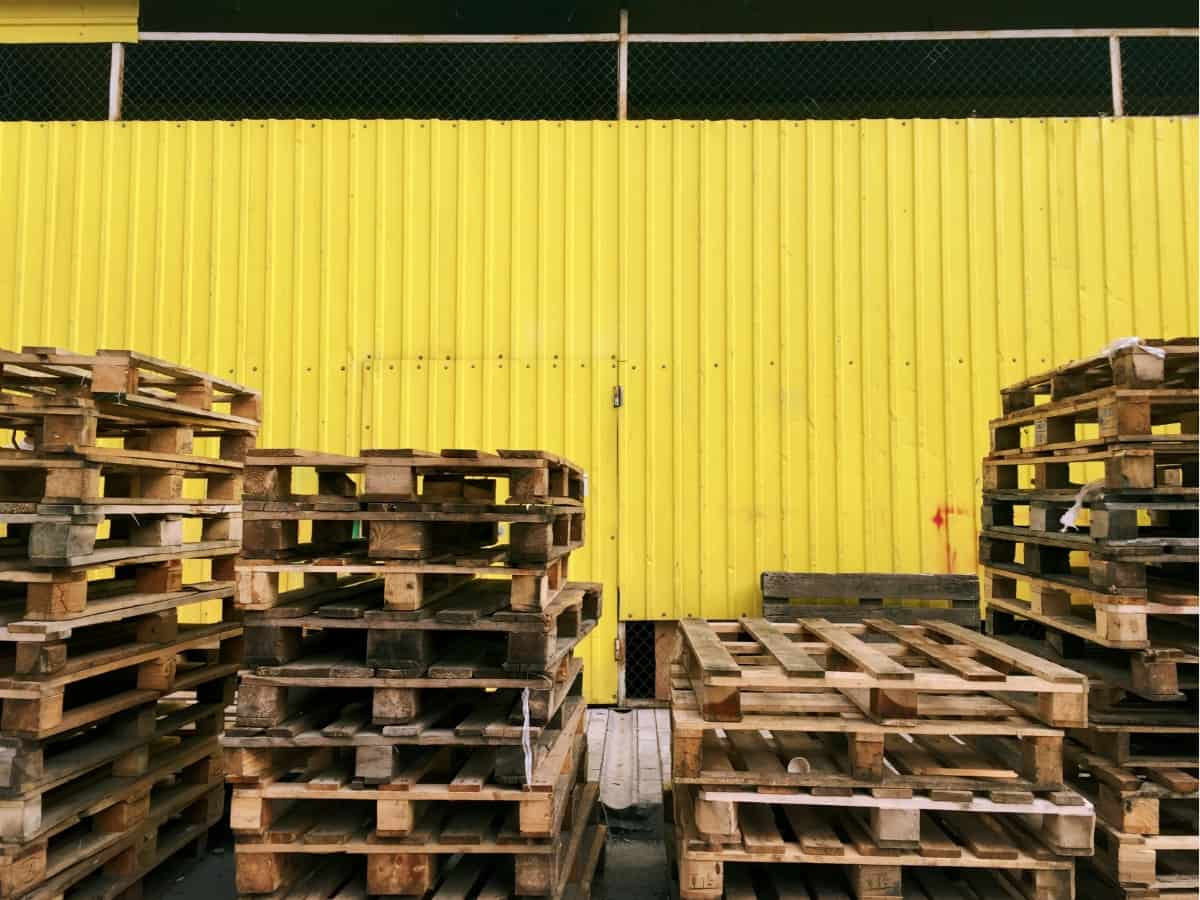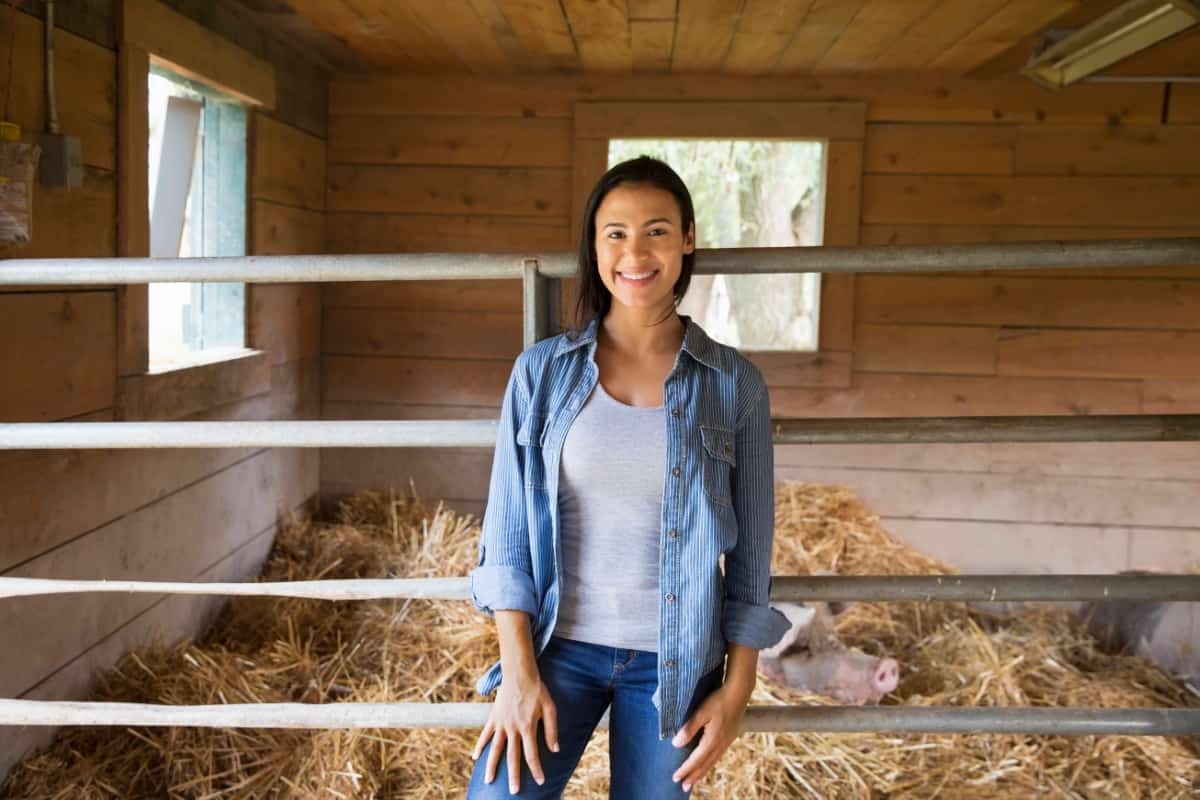Building a pig pen using pallets provides an affordable solution and allows for customization and easy maintenance. Building a pig pen with pallets not only saves costs but also offers flexibility in design and promotes good airflow within the enclosure, all contributing to healthier and happier pigs. Pallets are also durable and long-lasting, making them a sustainable choice for building materials.

How to Build a Pig Pen with Pallets
Gather Required Materials to Build a Pig Pen
- Pallets: Look for sturdy pallets that are in good condition. The number of pallets will depend on the pen size you want to build.
- Hammer and nails: These basic tools will be essential for securing the pallets together.
- Screwdriver and screws: Consider using screws instead of nails for added durability.
- Wire mesh or fencing: This will provide an extra layer of protection and prevent any potential escapes.
- Plywood or tarp: These materials create a roof over part or all of the pen, providing shade and protection from the elements.
- Bricks or cinder blocks: These can be used as a foundation for stability, especially if your ground is uneven.
- Water trough and feeder: Don’t forget about these essentials to keep your pigs well-nourished and hydrated.
Before Using the Pallets Clean and Disinfect the Pallets
Before you build your pig pen using pallets, it is crucial to ensure the pallets are clean and disinfected. Pallets can be used for various purposes before being repurposed for a pig pen, such as transporting goods or storage. Consequently, they may carry dirt, debris, or even harmful bacteria. Next, use soapy water and a scrub brush to wash each pallet surface thoroughly. Pay close attention to any cracks or crevices where dirt might accumulate.
After cleaning the pallets, disinfectant kills any remaining bacteria or pathogens on the wood surfaces. Follow the instructions provided by the manufacturer when using any chemical products for cleaning and disinfecting purposes. It is important for your safety and to prevent potential harm to your pigs.
Use 2×4 Lumber to Create a Frame for Your Pig Pen
First, measure the dimensions of your desired pig pen and cut the 2×4 lumber accordingly. Ensure to account for any additional space needed for feeders or water troughs. Next, assemble the frame by attaching the pieces of lumber using screws or nails. Be sure to use strong fasteners that will hold up against the weight and force of your pigs.
In case you missed it: 15 Cheapest Ways to Build a Pig Pen: Budget-Friendly Construction Ideas, Tips, and Techniques

Once you have constructed the basic frame, it’s time to secure it into place on level ground. Use stakes or brackets to anchor the corners securely. Now that your frame is in place, you can begin attaching the pallets to create walls for your pig pen. Nail or screw each pallet securely onto one side of the frame until all sides are enclosed. Remember, safety is paramount when building a pig pen. Using 2×4 lumber as a foundation for your pig pen ensures durability and stability for years.
Attach the Pallets to the Frame Using Wood Screws or Nails
To secure the pallets to the frame, you will need wood screws or nails. This step is crucial in ensuring the stability and durability of your pig pen. Start by positioning a pallet against one side of the frame. Make sure it aligns properly with the edges of the frame. Then, using a drill or hammer, attach the pallet to the frame by driving wood screws or nails through both materials.
Repeat this process for each side of the pig pen, ensuring that each pallet is securely fastened to the frame. Be mindful of spacing when attaching the pallets as well. You want them close enough together so there are no gaps where pigs could escape, leaving enough space for ventilation.
Install Wire Mesh to the Top of the Pig Pen for Ventilation
Ventilation is important for keeping a healthy environment for your pigs, as it helps regulate airflow and prevent the buildup of harmful gases. Adding wire mesh to the top of the pig pen allows fresh air to circulate freely while keeping predators or other animals out. The wire mesh should have small enough gaps to prevent any escape attempts from your curious pigs. Ensure the wire mesh is securely fastened to prevent accidents or injuries. Proper ventilation keeps your pigs comfortable and vital to their overall health.
Install Hardware Cloth to the Bottom of the Pig Pen to Protect Your Pigs
To begin, measure the dimensions of your pig pen and cut the hardware cloth accordingly. Leave some extra length so you can securely fasten it to the frame. Next, lay out the hardware cloth on the ground within the boundaries of your pen. Use staples or nails to attach it securely to the wooden frame, ensuring no gaps or loose edges where pigs could get through.
In case you missed it: Project Report on Pig Farming: Cost and Profit Analysis

Hardware cloth is essential in keeping predators out and preventing your pigs from wandering off into areas they shouldn’t be. It provides a sturdy barrier while allowing proper ventilation within their enclosure.
Add Bedding Material like Wood Shavings or Straw to the Pig Pen
Adding bedding material to the pig pen is important in creating a comfortable and clean-living space for your pigs. The right bedding provides insulation and cushioning and helps absorb moisture and control odor. Straw offers excellent insulation properties and can help keep the pigs warm during colder months. It also allows for easy nesting behavior. On the other hand, wood shavings provide softness underfoot while effectively absorbing odors and moisture.
It’s essential to spread it evenly across the surface. This ensures that all areas are adequately covered, providing maximum comfort for your pigs. Using straw or wood shavings as bedding material in your pig pen creates a more hygienic environment that promotes better animal health. Not only does this enhance their overall well-being, but it also contributes to improved productivity in terms of growth rate and weight gain.
Provide Your Pigs with Access to Fresh Water and Feeders
It is essential for their health and well-being. Pigs need constant clean water to stay hydrated, especially during hot weather. Pigs have specific dietary needs that should be met. Consult with a veterinarian or an expert in pig nutrition to determine the appropriate type of feed for your pigs based on their age and size.
To ensure easy access to food, install sturdy feeders inside the pig pen. These can be made securely from old buckets or troughs attached to the pen walls. Regularly monitor your pig’s eating habits and adjust their diet as necessary.
Install Fencing Around the Perimeter of the Pig Pen
Start by measuring the pig pen length and width to determine how much fencing material you need. Choose sturdy wire or mesh fencing tall enough to prevent curious pigs from jumping over. Attach the fencing securely to each side of the pig pen frame using a staple gun or nails. Ensure there are no gaps or loose ends where a clever pig could squeeze through. To further reinforce the fence, consider burying part of it underground. This will deter any attempts at digging under it by determined pigs. Inspecting and maintaining your fence for any signs of damage is essential.
Finish Building Your Pig Pen by Adding a Roof
When adding a roof, you have several options. You can use corrugated metal sheets, which are durable and weather-resistant. Another option is to use heavy-duty tarpaulin or canvas material stretched across the top of the pen. The roof should cover the entire pig pen area, providing ample shade and protection from rain or snow. Not only is this an affordable and sustainable option, but it also benefits you and your pigs. Remember to regularly clean and maintain your pig pen to keep it sanitary and comfortable for your animals.
In case you missed it: Auckland Island Pig Facts: Origin, Size, Physical Characteristics, Pros, and Cons

Conclusion
Pig pens come in various sizes and designs, depending on the number of pigs housed and the available space. However, building a pig pen with pallets is one cost-effective option that has gained popularity. Using pallets offers several benefits for constructing a pig pen. They are readily available at low cost or sometimes even free. Pallets are versatile and can be easily customized to fit your specific needs. You can adjust the pen size by adding or removing pallets as required.
- Feed Your Flock for Less: Top 10 Tips to Save on Chicken Feed
- Ultimate Guide to Ossabaw Island Hog: Breeding, Raising, Diet, and Care
- Hatching Answers: The Top 10 Reasons Your Chickens Aren’t Laying Eggs
- Eggs and Economics: Breaking Down the Cost of Raising Backyard Chickens
- Defend Your Greens: Proven Methods to Keep Iguanas Out of Your Garden
- Ultimate Guide to Cinnamon Queen Chicken: A Comprehensive Guide for Beginners
- Ultimate Guide to California Tan Chicken: Breeding, Raising, Diet, Egg-Production and Care
- Ultimate Guide to Marsh Daisy Chicken: Breeding, Raising, Diet, and Care
- 10 Types of Chicken Farming Businesses You Can Start for Profits